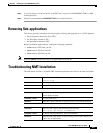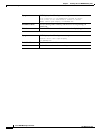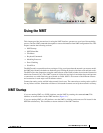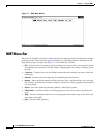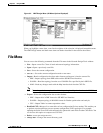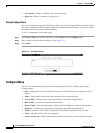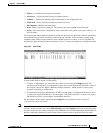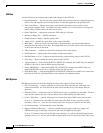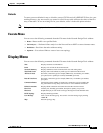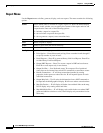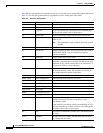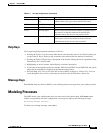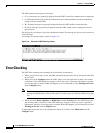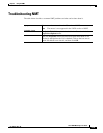
3-7
Cisco WAN Modeling Tools Guide
OL-10426-01, Rev. A0
Chapter 3 Using the NMT
Display Menu
Defaults
To create your own defaults for any or all tables, create a CNF file and call it DEFAULTS. Save it to your
working directory. Any new records you create for a field in any table will have the values of the first
entry in that table. To use an existing file for your defaults, select it in the edit options window.
Note This option does not apply to the site names field in any table.
Execute Menu
You can access the following commands from the File menu in the Network Design Tools window:
• Route—Routes traffic over specified links
• Fail Analysis...—Performs failure analysis on the lines and forces NMT to create alternate routes.
• Build Sites—Provisions the nodes without routing.
• Optimize—Uses selected links to create a least cost topology.
Display Menu
You can access the following commands from the File menu in the Network Design Tools window:
Sites Displays customer site information.
Links Displays a list of links in the current network.
Network Summary Displays summaries of the current network costs and routing status.
Total Links Load Displays static load estimates by traffic type for each link in the network.
ATM & Fr Ports Site name, connection type (for example, FRM-V35), slot number, port number,
port speed (cells or packets per second), SUM MIN (port load).
Data & Voice Ports Site name, connection type (for example, SDP-V35), slot number, port number,
port speed.
Connection Routes Connection to/from, number of connections, connection type (for example, FR,
56), path number of hops, delay time in msec for voice and NTS connections.
Failed Connections Displays failed connections and connections that have not been routed.
Parts List Listed by site, including part number, description, quantity, cost per site.
Resources Graphical display of each node’s card cage showing front cards and back cards.
PNNI Topology Displays PNNI logical links.
User Message View or clear the message log. You can also view the message log by entering
<Ctrl> W.
Map Network topology map.



